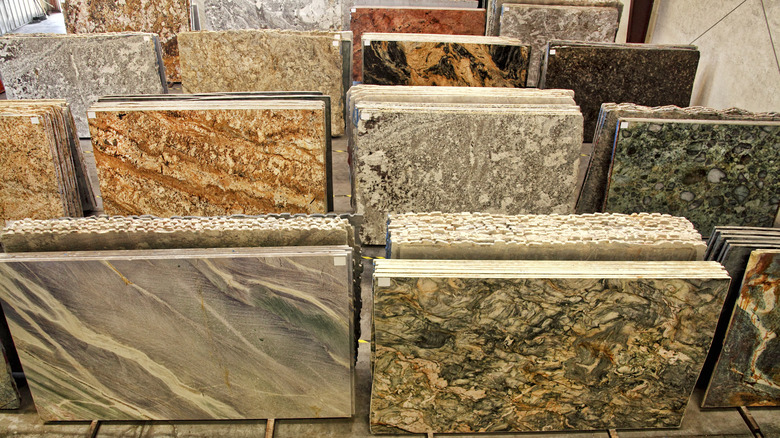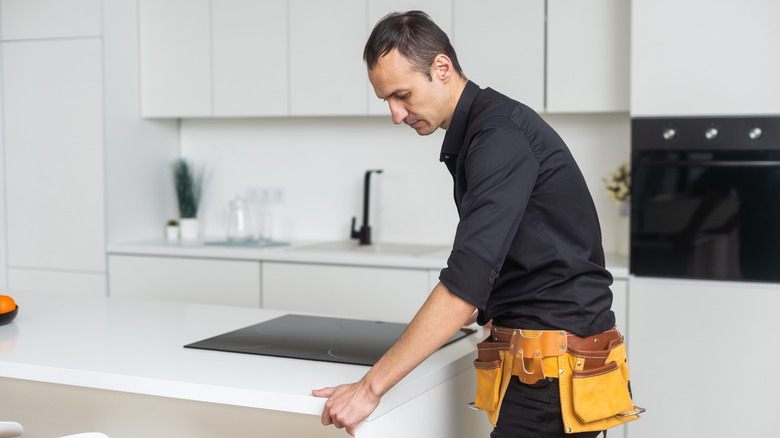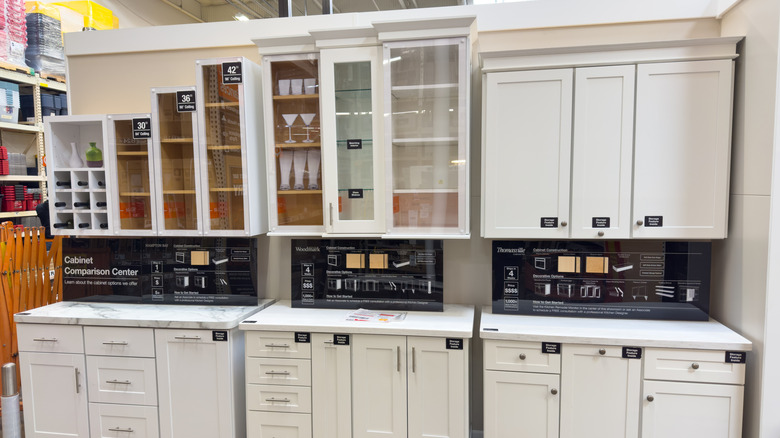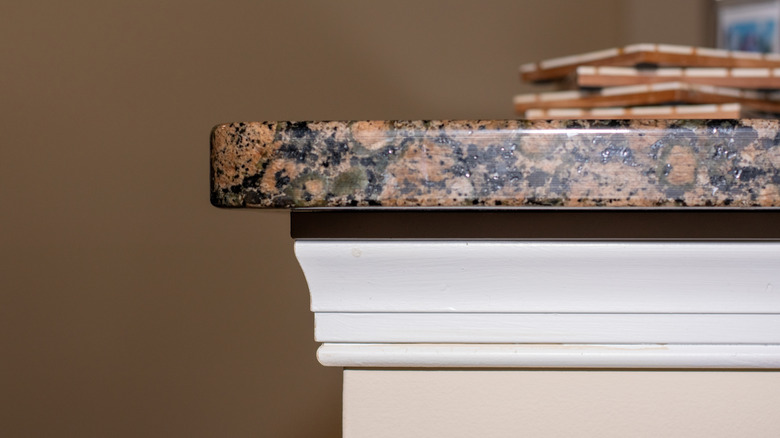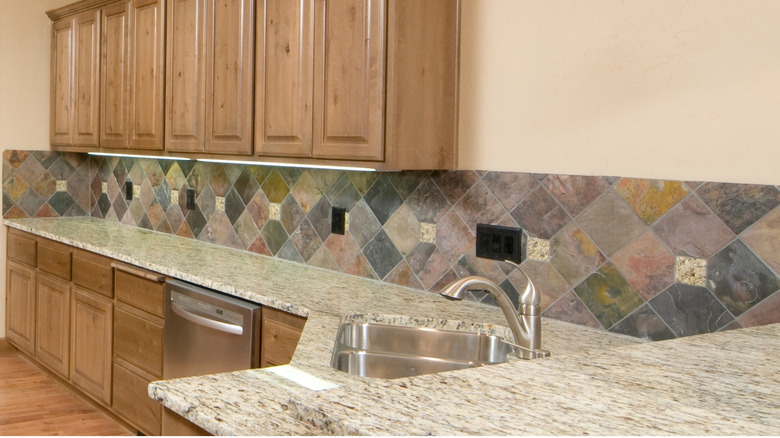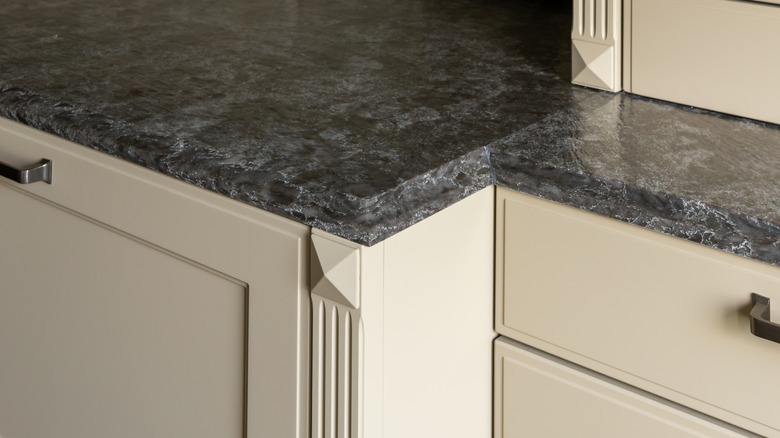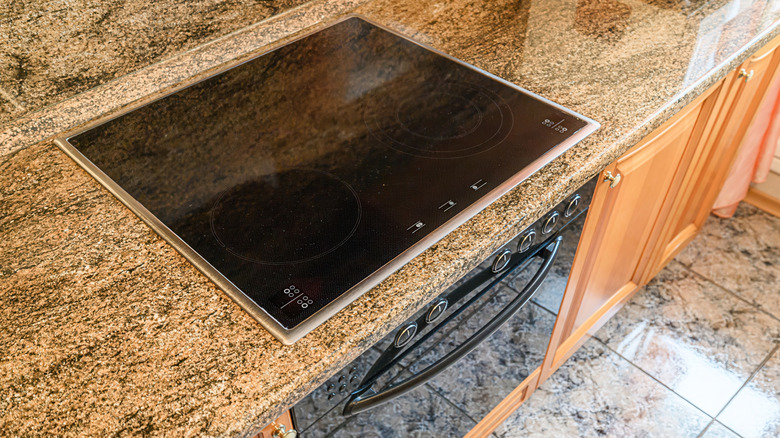9 Mistakes To Avoid When Buying Granite Countertops
There are several reasons why you might be considering purchasing granite countertops for your kitchen or bathroom. When you compare the durability of different countertop materials, granite consistently ranks as one of the top options. The natural stone is resistant against scratches, chips, heat, and other damage. Moreover, it is relatively low-maintenance, especially when compared with other natural stones like marble. Granite also comes in a wide assortment of color and pattern options, making it easy to find something that will work well in your space. Because of all of these benefits, granite is one of the countertop choices excellent for the resale value of your home.
However, if you want to fully take advantage of the beauty and value that granite countertops can add to your home, it is important to avoid making a mistake when shopping. There are, unfortunately, several common errors that people make when shopping for new granite countertops. Depending on the mistake, it could negatively impact the overall appearance and aesthetic appeal of your countertops, compromise the durability and longevity of the stone, or result in you paying more than you should for your renovation project.
Thinking that you should try to save money with a DIY installation
There are many instances when it can make a lot of sense to try to complete a home improvement project yourself, instead of hiring a professional. You can often save a lot of money. DIYing a project also gives you greater control over how it turns out. However, while attempting to paint your home like a professional may be within your wheelhouse, it is unlikely that installing a granite countertop is something you'll want to attempt on your own. Though it is technically possible to install a natural stone countertop, such as granite, on your own, you'll find very few people who strongly recommend trying it.
First, granite is very heavy, so finding a way to transport it to your home will be a challenge — you can't exactly pop your trunk and just throw a slab of it in. Beyond its weight, granite can crack or chip if it isn't handled properly, so you'll be risking damaging the slab before you even get it installed. One other key reason you might want to reconsider a DIY installation is because of the specialty tools that will be needed. Cutting, working with, and polishing granite will require tools that are almost certainly not in your workshop, such as a diamond blade wet saw. You might be able to rent these, but that will not be cheap, and you'll still need to learn how to use them properly to avoid damaging the material (or yourself). All in all, with the difficulty of working with the stone, the special tools you'll need to install it, and how much time you'll spend attempting the DIY, you're likely better off leaving things to a pro.
Assuming a big box retailer will be the best place to shop
Big box home improvement stores, such as The Home Depot or Lowe's, have practically everything you'd need for a kitchen renovation project. And, that includes granite countertops. While you can often get a good deal from these stores for appliances, lawn equipment, and other products, they're not always the best choice when it comes to shopping for granite.
When looking to keep your costs down, it's common to save money by opting to shop with a small business. Instead of outsourcing the cutting and installation of the countertops — like big box retailers will do — they perform all the steps themselves. This cuts out the middleman, often proving to be one of the best ways to find budget-friendly countertops for your home.
The other reason you might want shop with a local countertop company is the level of service and knowledge you'll receive. While the salespeople who work at big box retailers likely receive some training on countertop materials, such as granite, their job also entails many other tasks and product types. When you work with a company that specializes in stone countertops, you're more likely to find a more knowledgeable associate who will be better able to answer your questions and offer recommendations that match your specific needs.
Not choosing the right thickness
As you're shopping for granite countertops, you don't want to make the mistake of overlooking the thickness of each slab. Just because you really like the colors or patterns on a particular slab — or its price tag — it doesn't guarantee that it will be the ideal thickness for your needs. Choosing a slab that is thinner than recommended for your project can cause a range of problems. As you may guess, thinner slabs are not as durable as their thicker counterparts, so they'll be more likely to crack or sustain other damage. If you're shopping for countertops for your kitchen, this is something particularly important to consider. A kitchen sees a lot of action (often with heavy cookware and other tools), so you don't want to set yourself up for a serious problem down the road. As you're considering the cost to purchase granite countertops, those thinner slabs will often be less expensive upfront. However, is it really worth the initial savings if there is a risk of costly damage in the future?
So, be sure to take the thickness of each slab into account before finalizing a decision. Granite is most commonly found in 2 or 3 centimeter thicknesses. When designing a kitchen, stick with the thicker 3-centimeter option to minimize the risk of damage. You could consider a thinner 2-centimeter slab for a bathroom or other smaller project. Just keep in mind that additional reinforcement might be needed to protect the slab from sagging over time. There are other reasons to consider thicker countertops, beyond just durability. Generally speaking, a thicker countertop will more closely match modern design trends, helping you boost the appeal of your kitchen or bathroom.
Forgetting to coordinate the color and pattern with the other design elements in your space
Whether you're undertaking a full kitchen or bathroom renovation or you're simply giving your old countertops a much-needed upgrade, you likely share the same goal: You want the finished space to be aesthetically appealing and well thought out. For this reason, choosing a granite slab without considering the other design elements and finishes in your space can be a serious mistake. Your new countertops may clash with other elements or the space may just look very haphazard and thrown together.
To avoid making this mistake, it is crucial to be very thoughtful when designing your kitchen or bathroom. If you're only replacing the countertop, bring pictures of the space with you when shopping, paint samples of your wall color, and one of the pulls from your cabinet drawers. If you're designing a new space from top to bottom, you might want to choose the countertop as one of the first steps in the process. Then, you can bring samples of it with you as you shop for new flooring, a backsplash, hardware, and paint. One other note: While you may be attracted to certain colors or patterns that are trendy right now, remember that trends can change. You might want to avoid some granite colors for a more timeless kitchen or bathroom.
Failing to examine the slab in person
With how much we all rely on online shopping for everything from groceries to holiday gifts, it's easy to assume you'll be fine choosing a granite slab online and calling it a day. Unfortunately, doing so is not advisable. Looking at pictures on a computer screen doesn't always accurately convey the colors of the stone. You might think that it coordinates with the other elements of your kitchen, but end up disappointed with the finished result once it is installed. If you only look at a picture online, you can also miss any imperfections on the stone that might make it less appealing to you. Granite, after all, is a natural stone, so it will not have a completely uniform appearance, and you don't want to be left with an odd mark in the center of your countertop.
You can start your search online, but you should always fit in time to go view any slabs you're considering in person. This way, you can get an accurate assessment of the stone's coloring and pattern and compare it to the other finishes in your kitchen or bathroom. You can also closely inspect the stone for any blemishes or imperfections and decide for yourself whether they are dealbreakers. Finally, by viewing the stone in person, you can gain a better understanding of its overall condition, whether there are any hairline fractures, and how it has been stored.
Overlooking edge profile options
Did you know that there are different options when it comes to the shape and design of the edge of a granite countertop? Well, there are. If you don't think about these when you're finalizing your decision and ordering your new countertops, you could end up with something that doesn't match your vision or that doesn't work with your lifestyle.
The first thing to keep in mind is that the cost of different countertop edge profiles can vary greatly. Opting for an eased edge, which is a basic straight side, will be the least expensive option. However, it doesn't offer much excitement or uniqueness, so you might want to consider other options. Beveled edges are slightly more expensive per linear foot, but their angled cut is often seen as a good fit for a modern space. Bullnose and ogee edges get even more pricy, starting from $15 per linear foot for bullnose to up to $50 per linear foot for ogee. A bullnose edge is rounded, while an ogee edge is more decorative with an S-shaped design. There are also several more intricate custom edges to consider if you have the budget. However, these can often cost over $100 per linear foot, which can really add up quickly if you have a large kitchen.
While thinking about the price and overall aesthetics of each edge is certainly important, they aren't the only things that should be on your mind as you shop. For example, some countertop edges are easier to clean than others, including those with an eased or a more rounded profile. A more intricate design could make cleaning the countertops a bigger challenge. Thinking about the best kind of countertop edges for homes with children may also be a priority. If you have young kids that are likely to run through the kitchen, you won't want something that creates a sharper corner. Instead, a rounded bullnose edge may be the best choice here as well.
Overlooking remnants as a way to save money
If you're looking to keep your renovation costs as low as possible, then you shouldn't make the mistake of overlooking granite remnants. If you're not familiar with remnants, they're the pieces of a slab that are leftover from other projects. Because they're not a full slab, you can often get them for a much cheaper cost. If you're doing a smaller project, such as a bathroom vanity, then you can probably find a remnant piece that is large enough for the entire job. Choosing remnants for a kitchen project may take some creativity, but it still has the potential to help you save a lot of money.
For example, you could consider using a more premium granite remnant for your kitchen island. Choose a pattern or color that coordinates with the rest of your countertops to create an upscale piece. Experts who share insider tips for buying stone remnants will also tell you that you'll want to be selective when shopping for remnants. It is important to assess the quality of the stone, consider its usable square footage, and ensure that it was stored properly.
Not being mindful of seams
Another mistake that you could make when buying granite countertops is failing to think about seams. As with clothing, a countertop seam is where two different pieces of stone meet. When possible, avoid granite slabs that are too small to cover an entire section of countertop. Large enough slabs will eliminate the need to have any seams, creating a, well, seamless look.
Unfortunately, it will not always be possible to find granite slabs that are long enough to cover the entire length of your countertops. In these cases, at least one seam will be unavoidable. There are still some things you can do, however, to minimize how visible that seam will be. For example, you should work with your contractor to choose an epoxy or caulk in a color that very closely matches the most prominent color in the stone. When seams are unavoidable, you may also want to opt for a darker granite slab. When the stone is darker, it is often easier to conceal the caulk at the seam.
Another idea is to be purposeful about where you place the seam, opting for somewhere more hidden, such as a less-used portion of the counter or an area that doesn't receive a lot of light. Hiring an experienced professional will be even more important when you need to disguise a seam. Proper installation and ensuring the granite is perfectly lined up will be key.
Choosing the wrong finish for your kitchen
Did you know there are different granite countertop finish options? Some finishes will be better suited to certain spaces and preferences than others, so you'll want to be careful to avoid making a mistake here as well. If you choose the wrong finish, you might not be happy with how it looks or the cleaning and care it requires.
If you want to stick with a more traditional granite look, then a polished finish is likely the best choice. With this finish, the stone has a glossy look that can help draw attention to its different patterns and colors. For more texture and character, then a honed or leathered finish are great options. For honed granite, the surface is buffed, leaving it smooth, but without the shininess of polished granite. However, be cautious with this finish in a kitchen, as staining is more likely. Leathered (or brushed) granite countertops go a step beyond honed. After honing the slab, diamond-tipped brushes are dragged across it. This process adds a lot of texture to the surface. The result will offer greater stain resistance, because of its ability to hide spots, spills, and smudges. However, dust and other debris can also become embedded in these grooves, making it important to regularly clean the surface.
